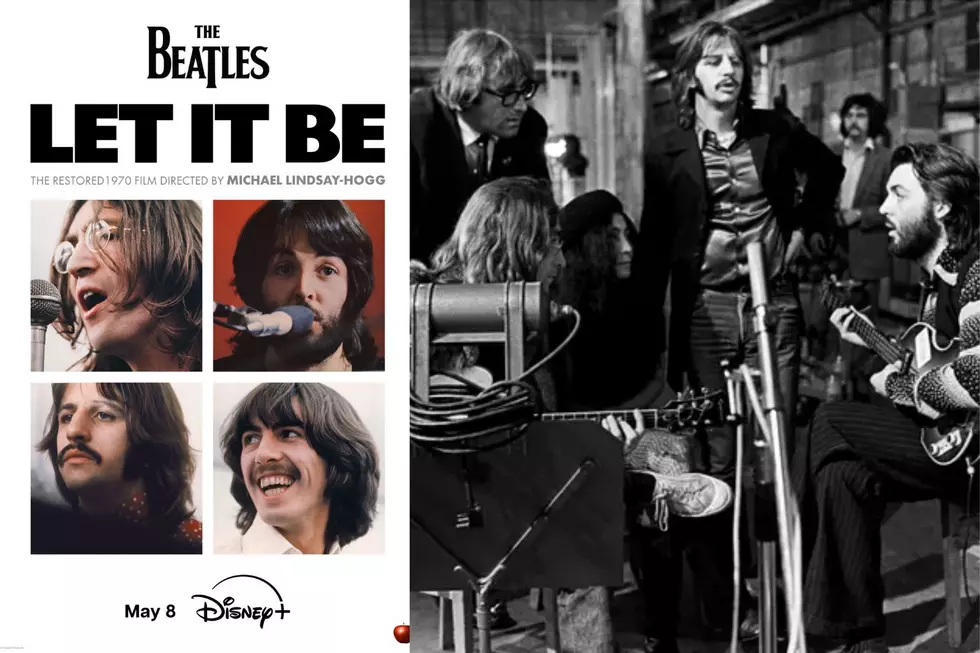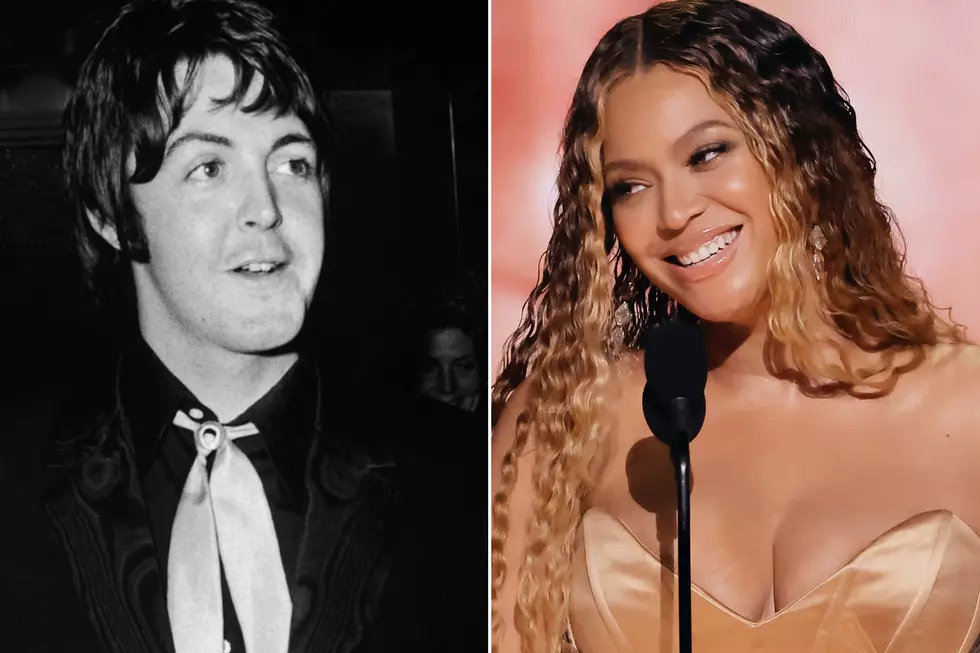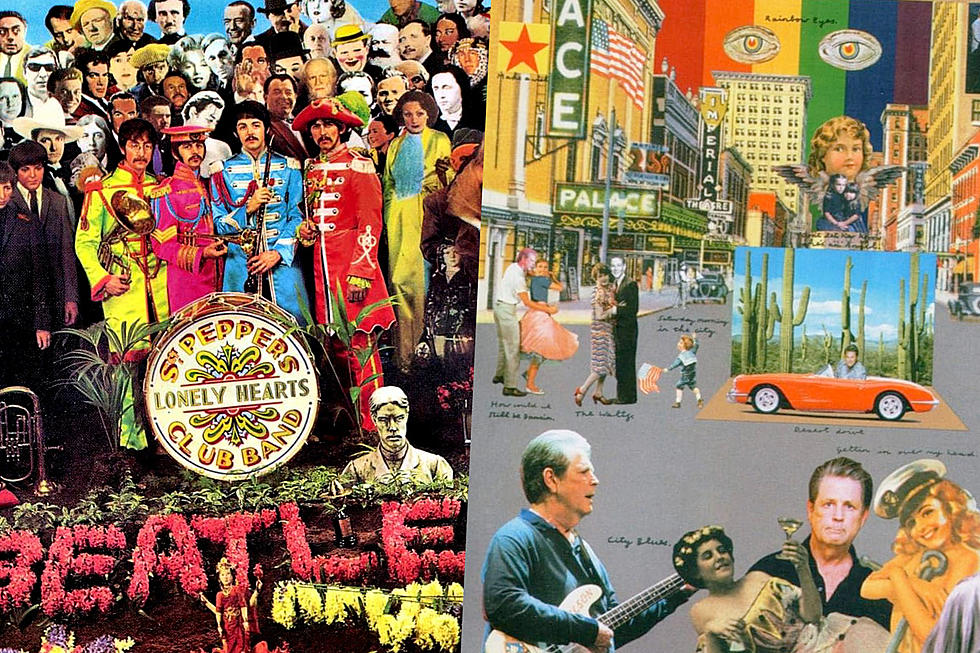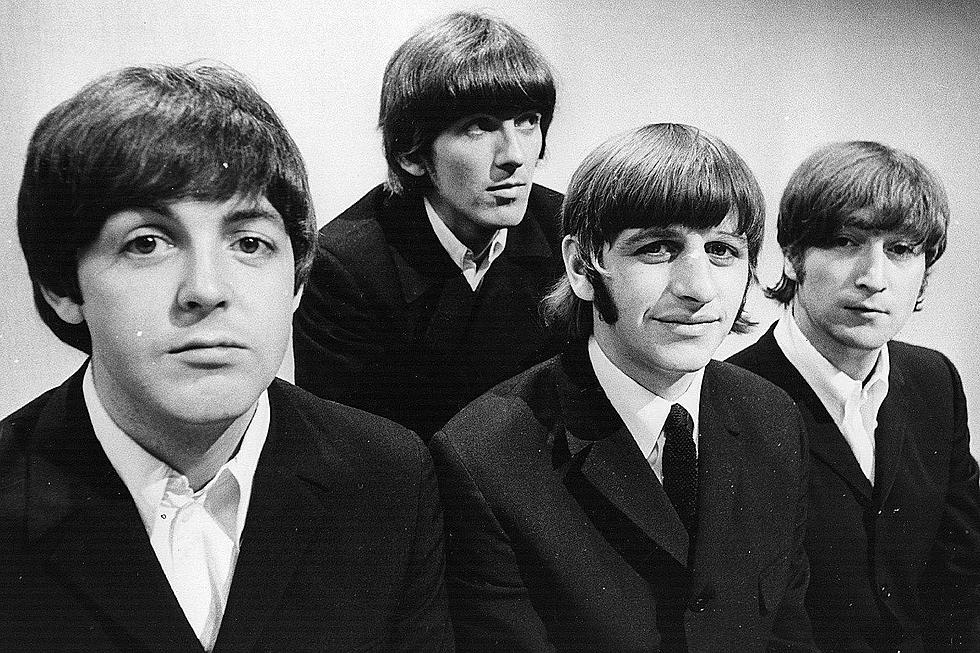Pink Floyd, David Crosby Watch the Beatles Get Goofy on ‘Lovely Rita’: The Story Behind Every ‘Sgt. Pepper’ Song
The term “meter maid” is an American expression, not an English one. The Brits call the same people “parking wardens.” Somehow, “Lovely Rita, parking warden…” just doesn’t have the same ring to it.
Which makes sense because Paul McCartney was inspired to write a song when he learned about the term “meter maid.” Like the other Beatles, McCartney was curious about U.S. culture and music, and he found the expression to be funny and slightly alluring.
“There was a story in the paper about ‘Lovely Rita,’ the meter maid. She’s just retired as a traffic warden,” McCartney recalled in The Beatles Anthology. “The phrase ‘meter maid’ was so American that it appealed, and to me a ‘maid’ was always a little sexy thing: ‘Meter maid. Hey, come and check my meter, baby.’ I saw a bit of that, and then I saw that she looked like a ‘military man.'”
He began to work on the song, first coming up with the name Rita, for how it sounded next to “metaah maid” – as said in a British accent. McCartney, who had earned his share of parking violations on the streets of London (more on that in a bit), came up with lyrics while walking near his brother Michael’s house.
“I remember one night just going for a walk and working on the words as I walked,” he said in Many Years From Now. “This was about the time that parking meters were coming in; before that we’d been able to park freely, so people had quite an antagonistic feeling towards these people. I’d been nicked a lot for parking so the fun was to imagine one of them was a bit of an easy lay, ‘Come back to my place, darlin’.’ It somehow made them a figure of fun instead of a figure of terror and it was a way of getting me own back.”
However, one of the meter maids who “nicked” McCartney for a 10-shilling parking fine later claimed that she was the inspiration for the song. Her name was Meta Davies (so the song could have been “Lovely Meta”) and she said that Paul saw her placing a ticket on his car, outside his home, then had a quick chat with her. When he noticed her name, he asked if he could use it in a song. Later, McCartney didn’t dispute the story, but said that the meeting didn’t result in a song.
Regardless of the inspiration, McCartney crafted most of the tongue-in-cheek tale on his own, before bringing the song into the studio for the Beatles to record on Feb. 23, 1967 – right in the middle of sessions for what would take shape as Sgt. Pepper’s Lonely Hearts Club Band. With George Martin producing and Geoff Emerick and Richard Lush engineering, the Fab Four tackled the basic track for “Lovely Rita” at EMI’s London Studios (a.k.a. “Abbey Road”). Paul led the charge on piano, with John Lennon and George Harrison each on acoustic guitars and Ringo Starr on drums, creating eight takes, the final one being considered the best. That one also contained an extended “vamping” section at the end, which could have been faded out but remained on the LP – along with Lennon declaring “have ’em leave it.”
After that was finished, Lennon, Harrison and Starr left, with McCartney and the crew staying behind for Paul to overdub a bass part onto “Lovely Rita.” The delayed addition of McCartney’s bass became a hallmark of the Sgt. Pepper sessions, as it gave him the ability to focus on his playing and make it a more melodic component of the finished song.
“Being able to work off of all the other elements of the track – enabled him to hear the song as a whole and therefore create melodic bass lines that perfectly complemented the final arrangement,” Emerick said in Here, There and Everywhere. “He would do those overdubs in the wee hours, long after everyone else had gone home. It would be just Richard and me up in the control room, with Paul sitting on a chair out in the middle of the studio, away from his usual corner, working assiduously to perfect his lines, giving all he had to the task at hand.”
These isolated takes also allowed Emerick to focus on the sound of McCartney’s bass, enhancing it with a richness that comes across on the record. It’s no wonder that Paul and his Rickenbacker bass are perceived as the foundation of Sgt. Pepper.
But work was far from complete on “Lovely Rita,” especially since McCartney didn’t yet have a full sheet of lyrics for the tune. The following day, Feb. 24, when he and the Beatles returned to EMI to record his lead vocals, McCartney reportedly huddled in a corner with Lennon, as well as road managers Neil Aspinall and Mal Evans, to finalize the words. Things were fluid up to the moment Paul tracked his vocals, making a last-minute change of “little white book” for “little blue pen” – perhaps because he wanted to show off his Liverpudlian accent on “booook.” David Crosby, then a member of the Byrds, was also at that evening’s session and supposedly assisted with the vocals, although there’s no audio evidence of this.
The Beatles turned to recording other material, including “Lucy in the Sky With Diamonds,” before getting back to good ol’ “Rita” on March 7, when Beach Boys-inspired backing vocals were recorded by Lennon, Harrison and allegedly a special guest, folkie Shawn Phillips. It’s also the session that saw record some of the song’s eccentric effects, mostly instigated by Lennon. These included heavy breathing, spooky utterances, mouth “maracas” and the horn-like “kazoos” created with EMI’s scratchy toilet paper intermingled with the lads’ combs. The members of Pink Floyd apparently watched the Beatles do this and decided to imitate them on The Piper at the Gates of Dawn’s “Pow R. Toc H.”
“Lovely Rita” was only missing one thing, but it was stumping all of the Beatles – something to occupy the bridge. Should it be a vocal passage or an instrumental one? Working in the studio on March 21, The boys couldn’t decide, although Harrison took a couple of stabs at creating something with guitar, which everyone agreed didn’t work. McCartney put it to Emerick to come up with an idea.
“My suggestion was that they try something on piano,” Emerick recalled. “To my surprise, Paul asked, ‘Why don’t you play it?’ In a kneejerk reaction – and to my everlasting regret – I demurred; I was simply too embarrassed to demonstrate my musical skills. Paul shrugged his shoulders and took a stab at it, but he still wasn’t a hundred percent certain that it was a good idea, so he had George Martin play something instead.”
Martin played a honky-tonk-esque passage, recorded at a different speed to make it sound higher-pitched (a practice used on the rest of the tune, as well as other portions of Sgt. Pepper). To enhance the producer’s piano bit, Emerick created a tape wobble to make the flourish stand apart.
Amidst all this, another crisis was happening as Lennon had accidentally taken LSD (mistaking it for an upper) during the session and was freaking out a little. Martin even had to take him to the roof of the studio to get some fresh air. But, one the piano bridge was in place, McCartney was able to take his bandmate home, took some LSD himself and tripped together in relative safety.
“Lovely Rita” became the third track on Side Two of Sgt. Pepper, joining the record’s musical mélange of sonic experimentation. As a jokey song, it’s far from the most celebrated song on the record, although it remains a favorite of Brian Wilson, partially because McCartney debuted it for him on piano before the album was released in June 1967. For years, Paul never played “Lovely Rita” on his solo tours, a streak that ended in 2013, when he began performing it with his band.
Watch Paul McCartney Play "Lovely Rita"
Beatles' 'Sgt. Pepper's' Cover Art: A Guide to Who's Who
More From Ultimate Classic Rock









